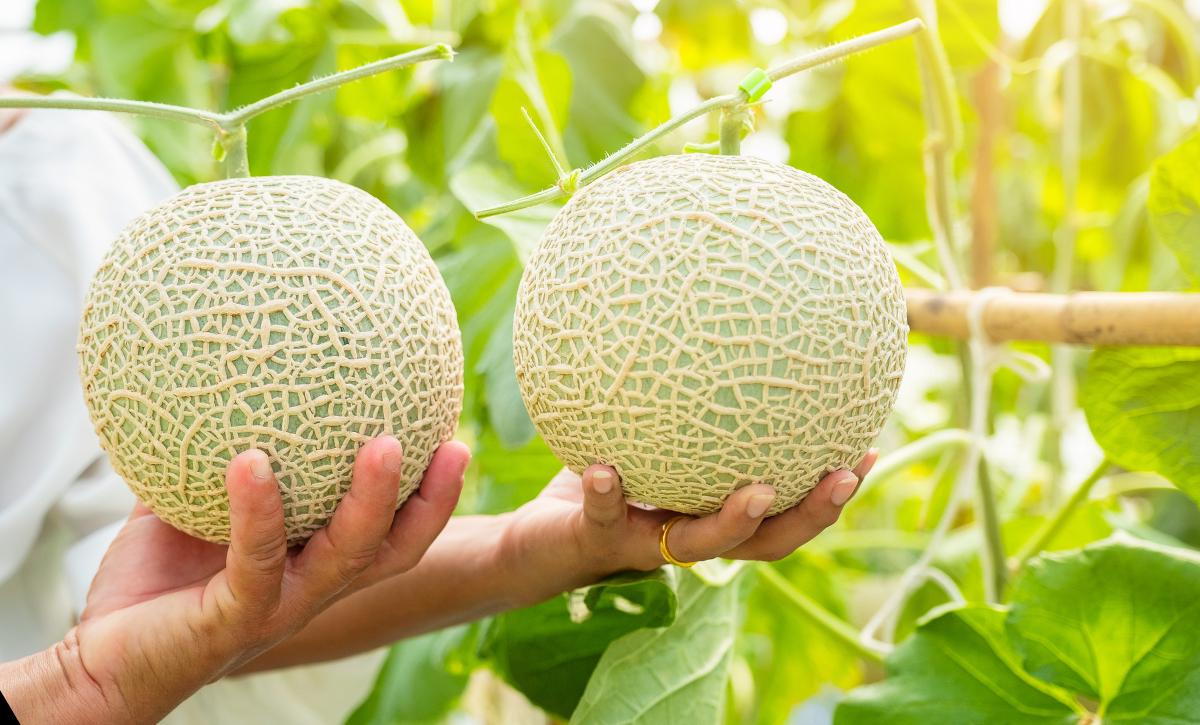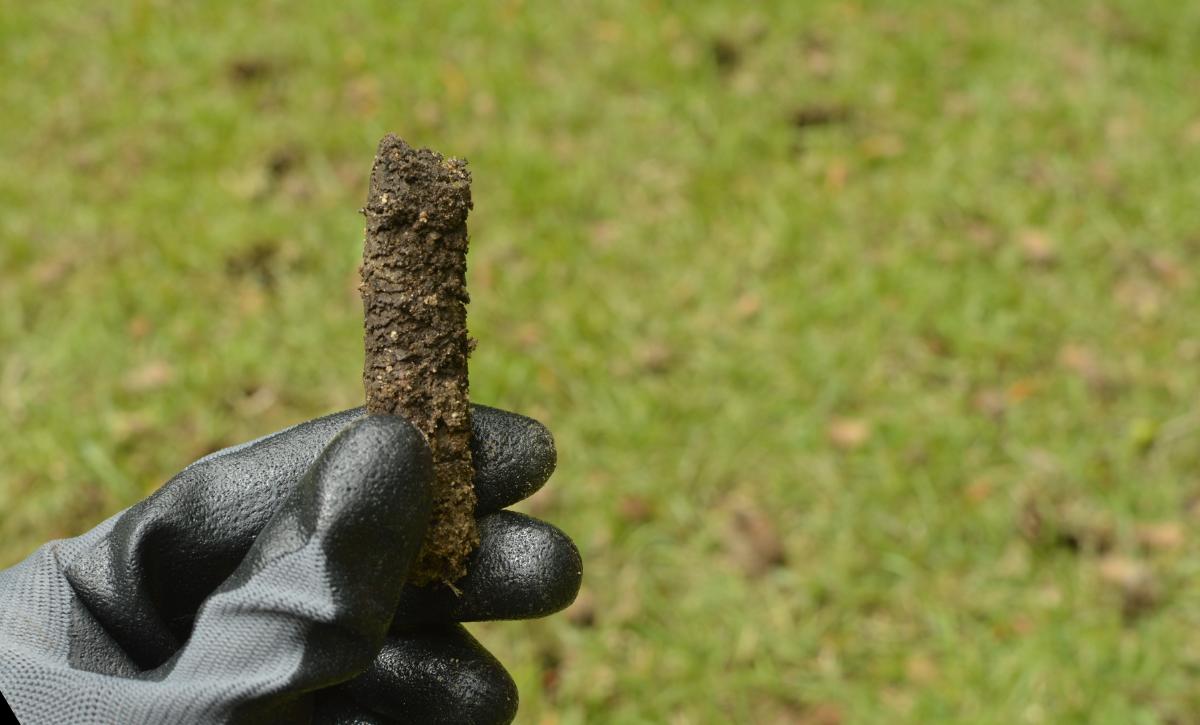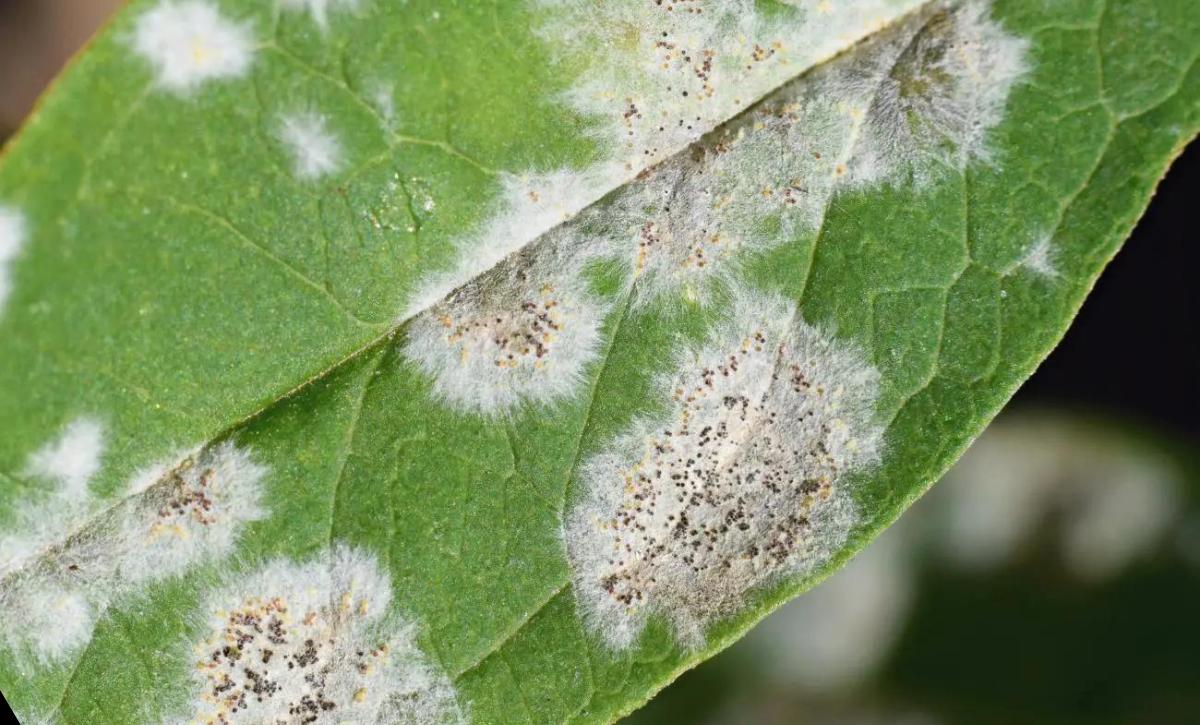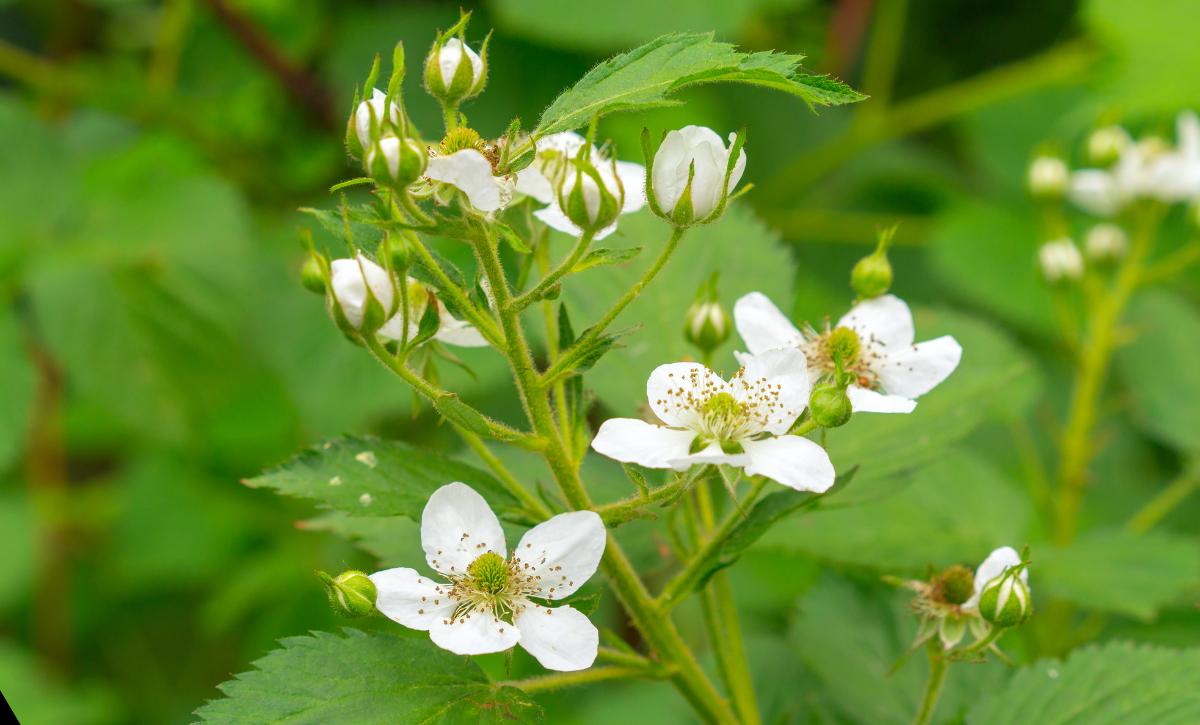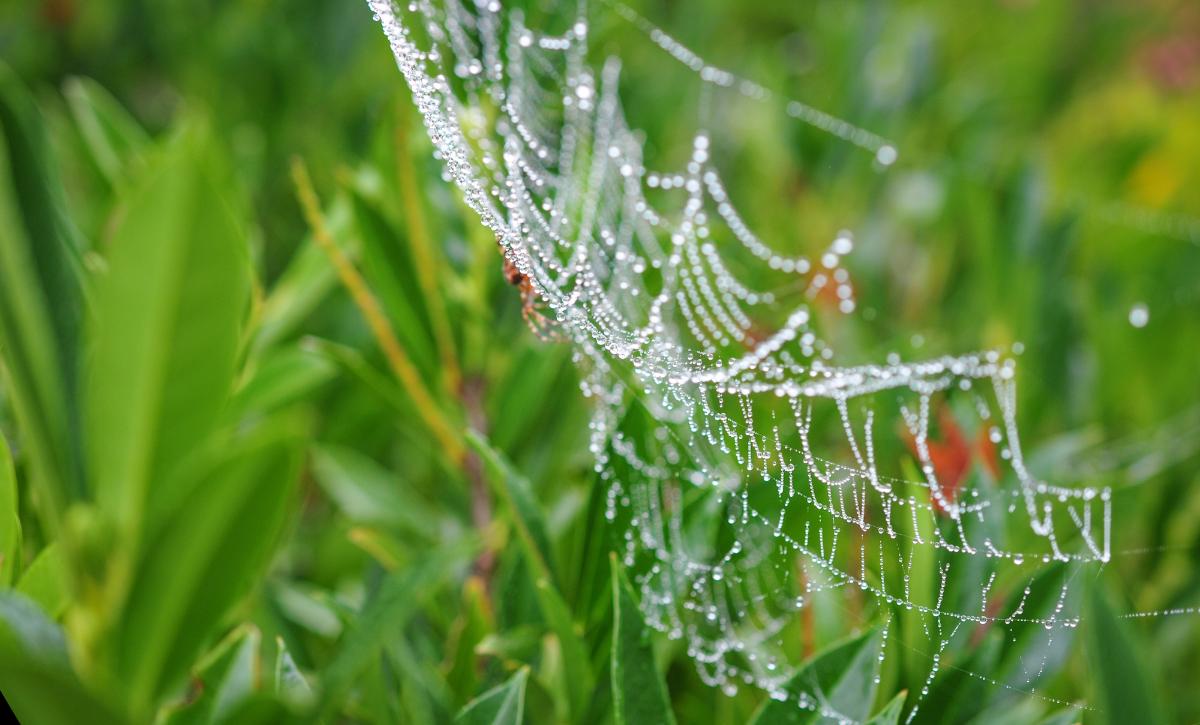Spiders in your house may be easy to deal with, but once they get to your garden, they may cause extensive damage to your plants and even the soil.
As a gardener, it’s expected that you may run into challenges while gardening your plants; spiders are one problem that may cause a headache.
While spider mites aren’t dangerous to humans, the speed of their spread makes them really hard to deal with. And to eradicate them from your garden, you must handle the arachnids and their eggs.
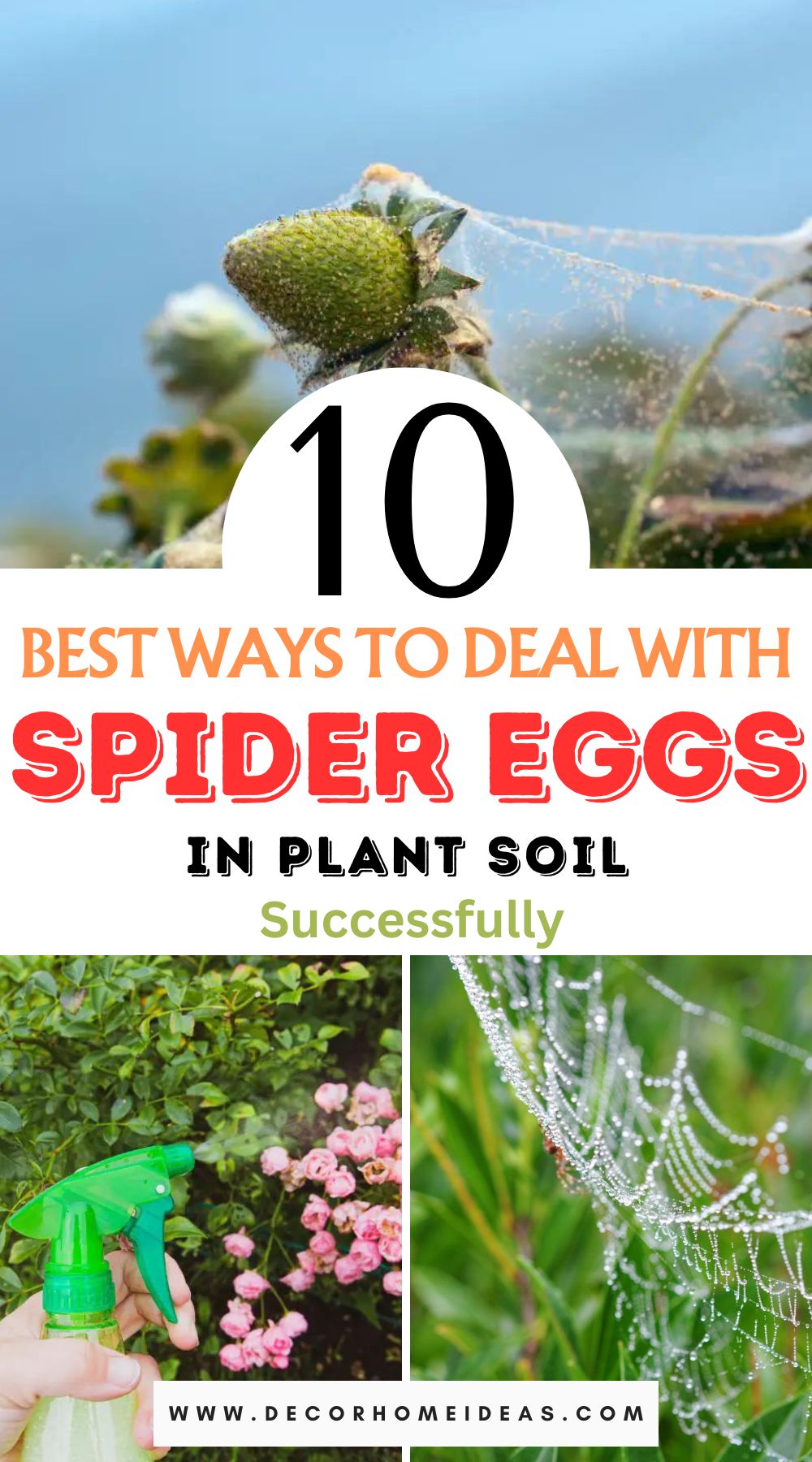
In this article, we’ll help you understand more about spider infestation, how to get rid of them, and how to prevent them from infesting your garden.
Presence of Spider Eggs in Plant Soil
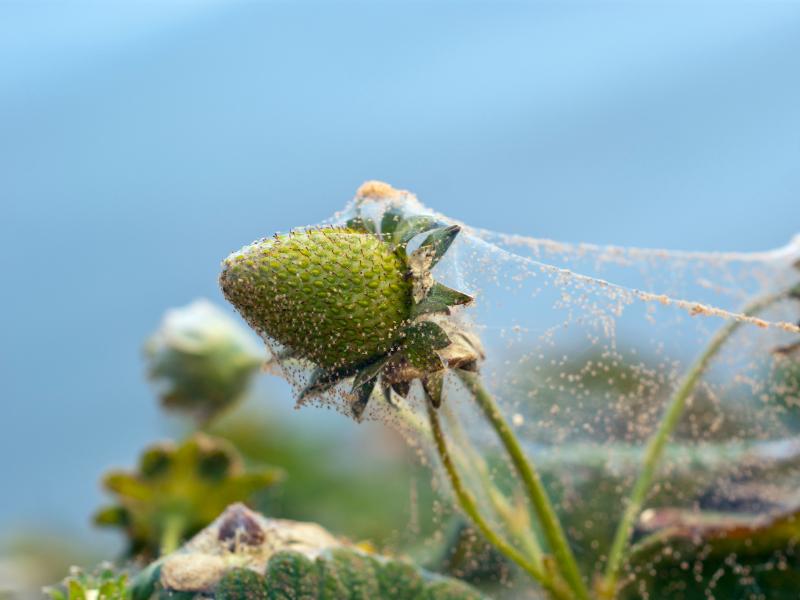
You may be in for a rude awakening once you notice spider eggs in plant soil. While adult spider mites may be easy to deal with, once the eggs hatch, you’ll have over 2,500 tiny mites.
This may cause severe problems to the plants in your garden, and if not dealt with quickly, the condition could spread to the entire garden.
What Do Spider Eggs Look Like?
Spiders lay tiny, white, or bright-colored eggs that resemble a sphere. The eggs are enclosed in a silk sac, usually smaller than a quarter.
Signs of Spider Eggs in Plant Soil
Determining whether you have spider eggs in your soil can be challenging since knowing what is happening below the soil is difficult. But there are a few signs you can watch out for to determine if your soil has been compromised.
Signs such as tiny brown or yellow spots on plant leaves, webbing, yellowing of the leaves, and stunted growth if the infestation is severe should all raise concerns.
Where Do Spider Mites Come From?
What’s even more annoying about these pests is that they can come from anywhere.
Spider mite infestation happens quickly. So, buying a plant with a few spiders or growing it in potting soil with spider eggs makes it easy to get a spider mite infestation.
Once you buy a plant, sterilize the pot before repotting it. If you are growing your house plant outdoors, it may have a couple of spider mites by the time you bring it back indoors, which could also lead to infestation.
One of the key problems with spider eggs is that they’re hardly visible to the naked eye, and you’ll only notice them once the population has drastically increased.
Spider Eggs Life Cycle
Spider eggs hatch pretty fast, and this makes them easy to spread. Here is the life cycle of spiders.
Stage 1: Egg
Spider mites lay their eggs in the soil. One spider adult may lay about 100 eggs, and they’ll hatch after three weeks.
The fertilized eggs become female spider mites, and unfertilized eggs become male spider mites. On average, the ratio of unfertilized eggs to fertilized ones is 3 to 1.
Stage 2: Larvae
Once the eggs hatch, the larvae begin feeding as soon as they hatch. When the larvae are in your garden, they feed on the plant cells and sap on the plants. After they hatch, nymphs are initially colorless, and as they feed on the plant cells, they begin developing color, exhibited by two black spots.
Stage 3: Protonymph
At the larvae stage, the 6-legged larvae is inactive until it develops into an 8-legged protonymph. You’ll start noticing webbing at this stage.
Stage 4: Deutonymph
The fourth stage is the deutonymph. Once the protonymph has had enough food, it hibernates or takes a rest. Gradually, the protonymph changes to a deutonymph by going through the molting process. At this stage, the webbing process is also present.
Stage 5: Adult
After the 4th stage, the deutonymph feeds, rests again and goes through molting to become an adult. The spider has completed the cycle, and the process can begin again. The only way to end the cycle is to act fast.
Spiders have a life cycle of about two weeks. In warmer areas, the life cycle may take as short as 7 to 10 days. Many people wonder if spiders die after laying eggs, but this is not the case; female spiders don’t die after reproduction.
How to Get Rid of Spider Eggs
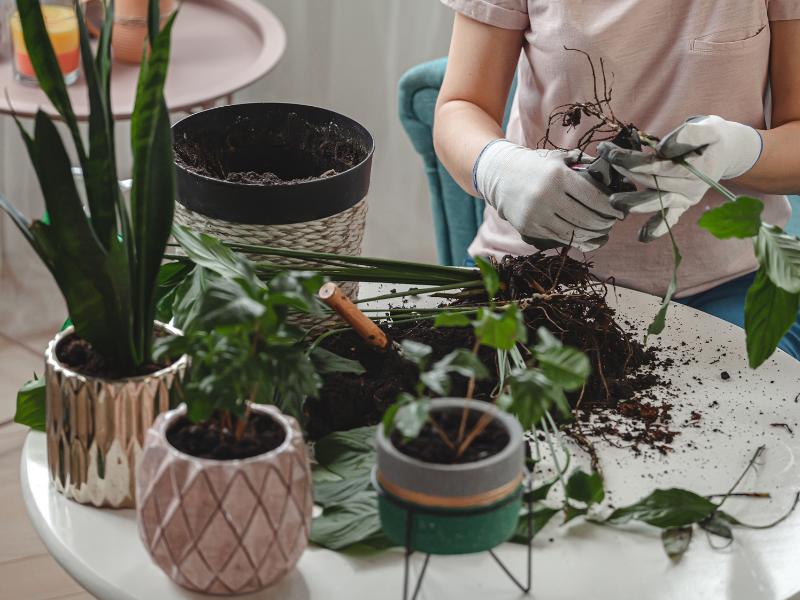
There are several methods to eliminate spider eggs in your garden soil. You can try using neem oil, drying out the soil, horticultural oils, insecticidal soap, hydrogen peroxide, imidacloprid, or rubbing alcohol.
Once you spot any signs of spider mite infestation, it’s imperative that you act immediately. The best way to stay ahead of the curve is to inspect your plants frequently. You may notice signs such as webbing on the plant or a change in your plant’s leaves, which may indicate the spider mites are about to lay eggs.
When choosing a solution to get rid of your spider mites, you can opt for either chemical or natural solutions to handle the problem. You can also adjust the conditions of your home to minimize the chances of the eggs surviving.
Neem Oil
This is one of gardeners’ oldest techniques to get rid of spider mites and other pests such as aphids, thrips, and fungus gnats in their plants.
Pests feed on plant tissues and roots, so opting for organic methods such as neem oil effectively eliminates the pests without damaging the plant tissues.
Wondering how neem oil works? The process is a bit torturous, but not to worry; this only affects the pests. Here is how it works. Neem oil contains a toxic component called Azadirachtin. This compound affects the minds of pests such as spider mites and impairs their eating ability and even that of multiplying. Conversely, eggs cannot move to the larvae stage, and they eventually die. By doing this, the neem oil destroys the entire colony of the pests.
Some plant growers complain that neem oil is ineffective in dealing with spider mites. However, to achieve any results with neem oil, you must apply it correctly; otherwise, it won’t be effective, and the infestation will only spread.
Apply neem oil to your plants before the infestation spreads for the best results. This oil will handle the existing pests and act as a preventative measure against future attacks. Apply neem oil to your plants twice a month.
You should apply the oil either in the early morning or late evening hours. Applying it when the sun is hot and high temperatures could burn the plant.
Dry Out the Soil
This is another effective way to get rid of spider mites naturally. This method works by allowing the soil to dry out completely.
Spider mites thrive in wet soil, making it the perfect breeding place for them. By drying out the soil, you prevent the soil from hatching and causing an infestation.
However, it’s important to note that soil drying only works if the growing plants can tolerate dry soil. Plants that prefer wet or moisturized soils may be adversely affected by this method, and the same goes for plants that thrive in saturated soils.
Soil drying can also disrupt or stop other pests’ lifecycles, such as springtails or millipedes. By destroying these creatures, you interfere with the food chain of spider mites since they feed on springtails and millipedes.
Using Insecticidal Soaps or Horticultural Oils
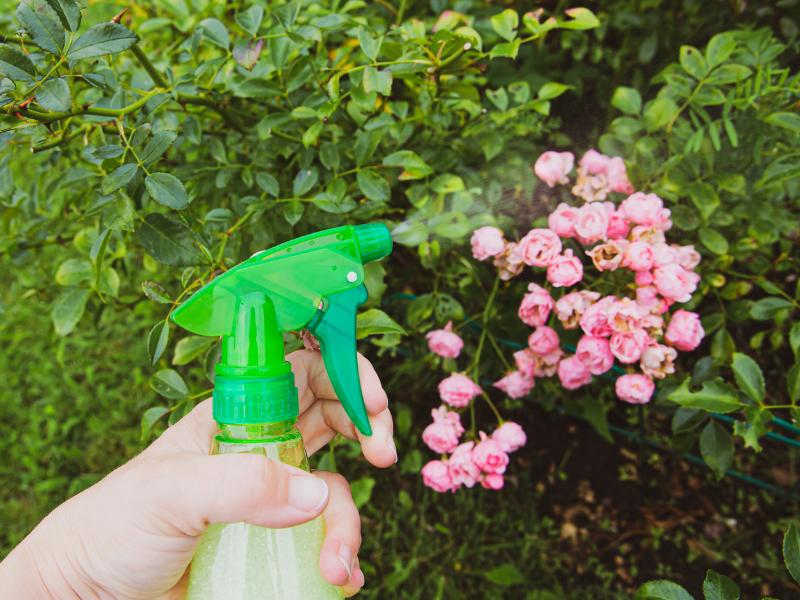
Even though natural solutions are preferable to chemicals, sometimes chemical solutions are the best option to handle an infestation. In this case, you should opt for an insecticide specifically made for spider mites.
These chemicals will be effective in clearing away the pest, and they won’t deal any damage to the soil or plant. Horticultural oils and insecticidal soaps are the most effective insecticides for spider mites.
Insecticides will work best in clearing adult spider mites, so reserve some for the eggs and the other stages before adulthood.
Here is how to apply it: Mix one teaspoon of mild insecticidal soap with a liter of water and spray it over the leaves using a spray bottle.
Hydrogen Peroxide
This bleach has several uses, and killing spider mites and spider mites eggs is one of them.
Hydrogen peroxides help deal with spider mites by changing the soil’s acidity, which in turn kills the spider mites. As the chemical fizzes, it also causes the eggs and larvae to die.
While it may be tempting, especially when you have a severe infestation, never apply hydrogen peroxide directly to the soil. Always dilute it with some water.
Add 3% hydrogen peroxide in a spray bottle, fill it with water, then spray it on the potting soil.
To clear all the mites, you’ll have to repeat the process severally until you destroy all eggs and all spider mites are gone. Once this happens, you’ll notice improvements in your plants.
For the severely affected parts, use a sterilized tool to prune them away.
Rubbing Alcohol
Not just spider bites, rubbing alcohol can also ward off other pests like aphids and thrips. Having it around your home can quickly help solve an infestation in your house plants without needing other alternative methods.
One of the things that makes rubbing alcohol an effective solution to pests is its ease of use. This method also has an excellent killing rate. Simply dip a paper towel or cotton bud in some rubbing alcohol and gently rub it on the plant’s leaves.
As for the soil, mix one part rubbing alcohol and three parts water in a spray table. Shake the mixture and spray it over the soil. It’s essential to use a balanced solution for this process. If the concentration of rubbing alcohol is too high, it may scorch the plants or cause extensive damage to the soil. On the other hand, it won’t be effective if it’s too low.
Drunk spiders (actually dead!) stand no chance against your plants.
Imidacloprid
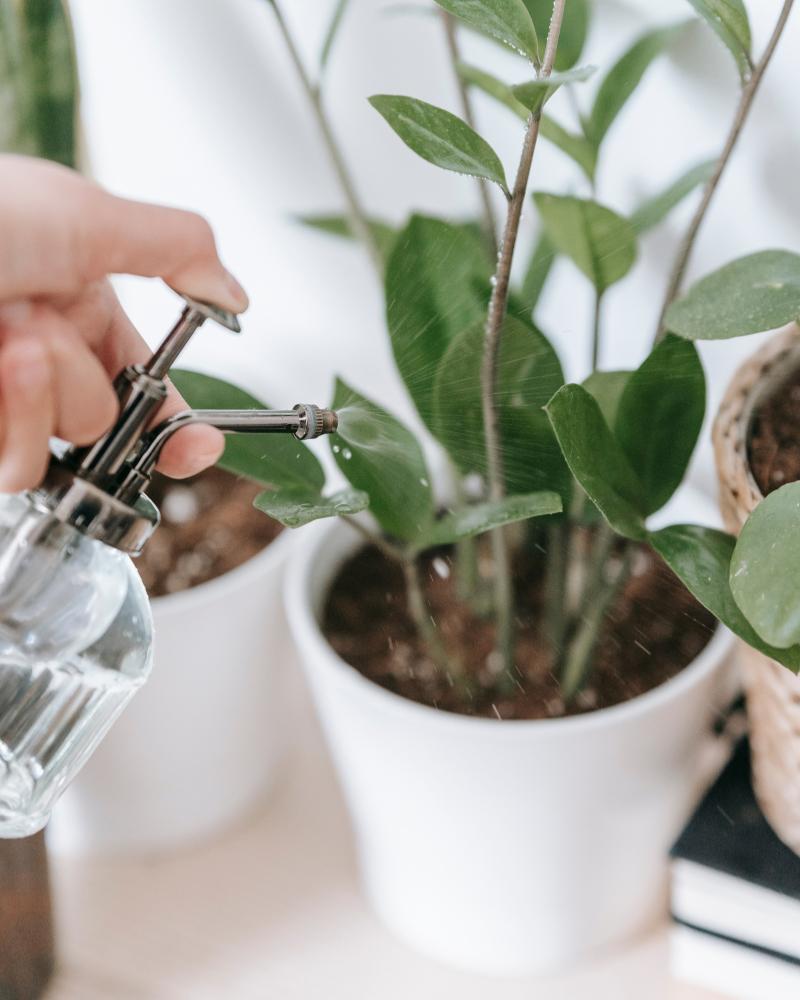
This chemical compound has proved to be effective at eliminating spider eggs.
There are many effective insecticides containing this element that you can use, including granular, crystallized, and liquid. The best option for handling spider mites is either crystallized or granular. When using these versions, you’ll need to apply the insecticide on the soil and then pour some water on the granules or crystals. This way, the water activates the imidacloprid compound in the poison.
Alternatively, you can try a systemic pesticide containing imidacloprid. This combination gives you a double advantage; it’ll kill the spider mites in the soil and those on the plant leaves.
While there are a lot of cons with spider mites, one pro is that they don’t linger on the plant for long, and if they do, imidacloprid will kill them. The compound will also end the infestation of your plant by other pests on it.
Ensure you follow the instructions on how to use this compound. If you don’t, your plants may die.
Insect Poison
If all the above methods prove ineffective, you can always try insect poison to end the spider mites menace in your garden. You can use many insect poisons to kill spider mites and eggs. When applied to the egg sac or the web, the poison separates the materials and kills the insects.
Add some poison in a 32 oz shower bottle and spray any spots where you see spider webs, egg sacs, and insects. A 32 oz bottle can cover about 200-300 square feet. Poison is highly effective; once the insect comes into contact with the mixture, it’ll instantly die.
Bacillus Thuringiensis Israelensis
If all the signs point to a spider mite infestation, you can try the Bacillus thuringiensis israelensis. This is a bacteria that you can find in the soil.
As commonly known, the BTI bacteria solve the infestation problem by attacking the larvae rather than the eggs. This way, the larvae never reach adulthood, and you deal with the infestation in a few weeks.
Always dilute the treatment with enough water to avoid damaging your plants’ roots. You should apply the solution to the soil.
DIY Versions
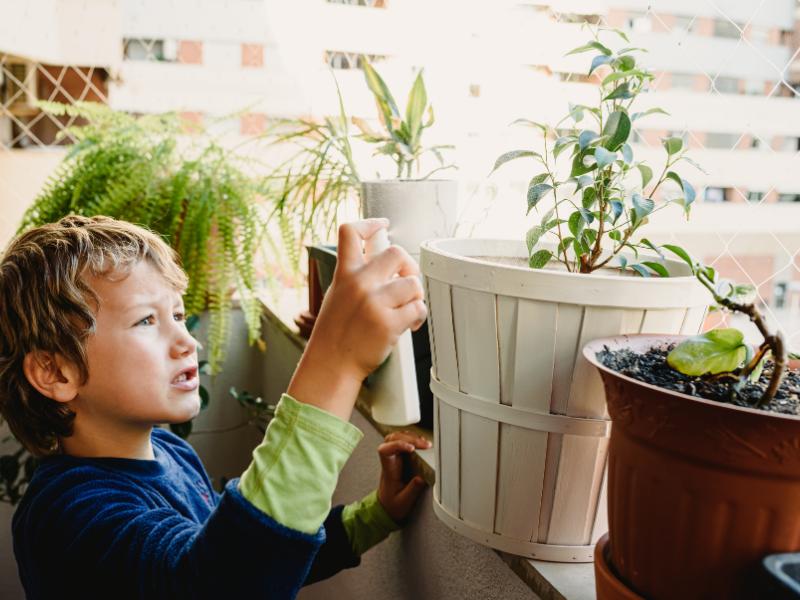
Sometimes, it may be impossible to access or purchase pesticides and insecticides due to different reasons such as costs or inaccessibility. Fortunately, you can try some DIY methods to solve this problem.
One of the most practical DIY methods is using Castille soap. This soap contains compounds and fatty acids that dehydrate and choke the spiders, and they eventually die off.
One good thing about DIY methods is they are straightforward. In this method, you only need to mix 1 tsp of liquid soap with some lukewarm water. Then, fill a spray bottle with the mixture and spray it all over your plant.
Castile soap can be used for the entire plant. The application is similar to that of rubbing alcohol. Dip a sponge in the soap mixture and rub it until the whole plant is soaked. Repeat this process on the plant several times until you notice signs of improvement.
Using Castille soap to deal with spider mites has two advantages:
- It can kill other pests, such as mealybugs, aphids, thrips, and whiteflies.
- It is safe for children, pets, and pollinators.
Another DIY method you can try is using Rosemary Oil. Like in the Castille soap method, you’ll have to mix it with lukewarm water and spray it on the soil. You can also add some cider vinegar to increase its effectiveness.
Natural pesticides are highly advantageous as they don’t contaminate your plant or soil. It also makes them practical to use indoors since there’s less risk of contaminating the food or the area.
Natural Predators
Spider mites can also be controlled naturally using natural predators who feed on the pests and clear them off your plant.
Here are some natural predators you can use to deal with spider mites:
- Lady bugs
- Predatory mites
- Lacewings
You only need this method to prepare the right environment to attract the insects. Reduce pesticide usage and the amount of mulch flowers and flower beds, as these insects don’t like such environments.
Alternatively, you can purchase predatory insect species in the market. Like DIY methods, using predators is safe for humans and pets.
How to Prevent Pest Infestation in Your Houseplants
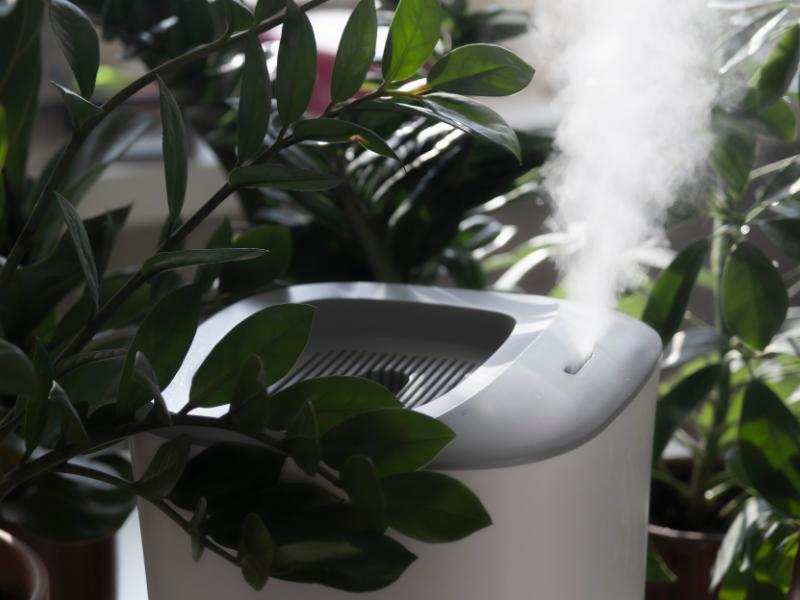
As the saying goes, prevention is better than cure, which also applies to plants. An infested plant can be highly demotivating as you put so much effort and time into caring for it.
How to control spider mites, gnats, mealybugs, and fungi?
- Always clean your plants regularly and dust them.
- If your plant has only been attacked by a few spider mites and they haven’t reproduced yet, you can wash them away with a stream of water.
- Keep the watering consistent and the soil moist.
- Ensure your plant has the correct humidity levels by using a humidifier.
- If you own an outdoor garden, you can grow different plants to discourage the infestation of pests, such as chrysanthemums and chives.
- To avoid issues, separate old plants from the new ones.
Wrapping Up
Spiders are not only scary bugs indoors, but they can also be destructive if they infest your garden.
Even though identifying whether they have infested your soil is difficult (unless you are using a magnifying glass), there are many methods you can use to get rid of these pests.
It’s important to spot them early to reduce the damage they’ll deal to your plants. You can opt for either organic or inorganic methods, such as chemicals, to eliminate spiders and spider eggs.
If you need help handling the situation, contact pest control, and your problem will be gone soon!


